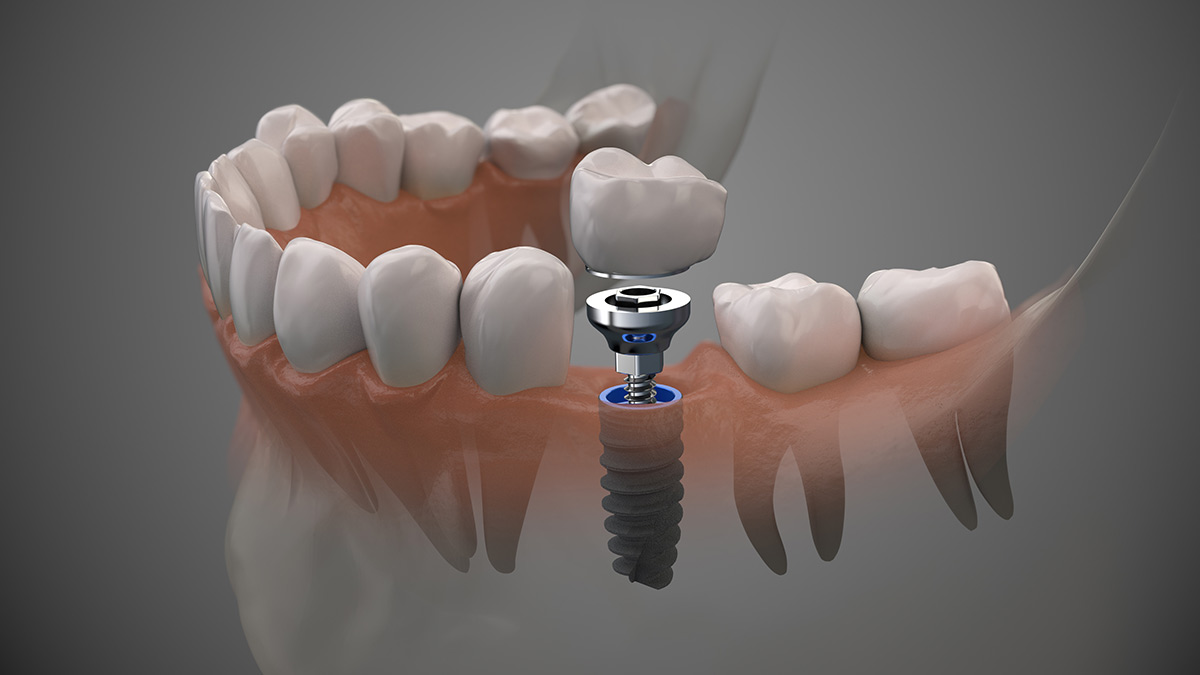
Dental
Implants
Culver City
“The first thing people notice about you is your smile.”
Plan Your Visit Now
Begin the Change
What are dental implants?
Tooth loss is an oral health problem that affects over 120 million Americans. This can be caused by periodontal disease, tooth decay, or injury. In the past, the standard treatment options offered to people suffering from tooth loss were dentures or bridges, depending on the severity of the tooth loss. Unfortunately, these options are still used today, and while they offer viable solutions, they are not without issue.
Today dental implants provide one of the best treatment options for missing teeth.
A dental implant is a device that is used to replace missing teeth. The implant is most often made from titanium, a biocompatible material, and has a shape that remembers a screw.
Implants are inserted into the jawbone by a surgeon, where it will act as an artificial tooth root.
The implant restoration typically has three parts:

1. Implant
The implant fixture, which is the part that is inserted into the jaw in the area where there are missing teeth, acts as the tooth’s root or the anchor.
This is usually a titanium piece that is biocompatible, and over time will integrate into the patient’s bone. This is a process known as osseointegration.
2. Abutment
The second part of the implant restorative process is called an abutment.
Abutments are often custom-made to the patient’s specific situation. They are made with precision machinery specific to the type of implant fixture placed in the jaw. These will usually be made from titanium but can be made from other materials.
3. Crown
The final part of the implant process is the crown that is placed over the abutment.
The crown is also fabricated with precision machinery to be placed over the abutment for a precise fit.
Crowns can be made from a few different materials but are made to look natural within the patient’s mouth.
Each part of the dental implant is made to replace missing teeth from the root to the final crown.
Why would I need dental implants?
There are several options to choose from for restoring missing teeth. In the past, the standard of care consisted of creating a bridge or a removable appliance like a partial or denture. While these are excellent choices when addressing esthetics or functional issues such as chewing, they have some drawbacks. Dental implants offer benefits that these other options do not provide.
One of the key reasons dental implants are the number one treatment of choice is their ability to function like a natural tooth from the root to the crown.
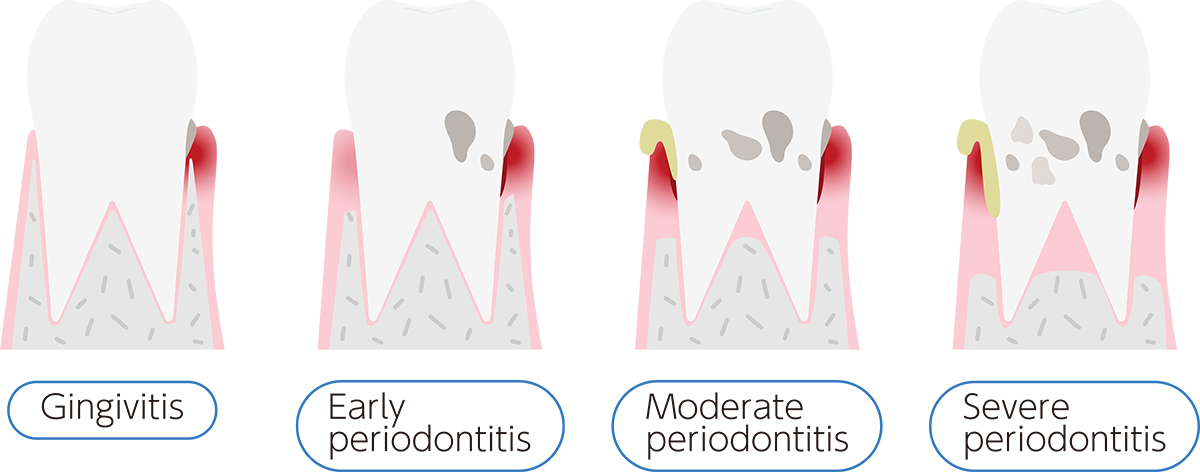
However, when tooth loss occurs, a loss of bone density also occurs. This is because teeth make contact with each other all day through actions such as chewing, and with this contact, the periodontal ligaments are stimulated, helping to create new bone. Without the stimulation, bone tissue will deteriorate. This process is known as bone resorption.
Potential issues surrounding bone loss
- Weakened Jaw
- Shrunken facial profile
- Wrinkled skin around the mouth area
- Issues with speech
- Surrounding teeth begin to be affected as they start to drift, misalign, loosen and even fall out.
- Pain in the face and jaw
- Diminished ability to chew leading to compromised nutrition
Since dental implants act as a tooth replacement by creating a restorative solution from the root to the crown, they essentially replace the missing tooth.
The titanium implant fixture is embedded into the bone and begins to integrate with the bone.
The completed implant crown then begins to transfer the chewing information to the bone, now stimulation and bone growth can begin.
Other options for tooth replacement, such as bridges or dentures, do not provide the necessary stimulation required to maintain healthy bone density.
Types of Dental Implants
While implants come in various materials, designs, and sizes, four general types of dental implants are available. These four types of implants are endosteal, subperiosteal, zygomatic, and All On 4 dental implants.
The implant type to use is decided based on the specific treatment plan arrived from the patient’s dental evaluation.
Endosteal Implant
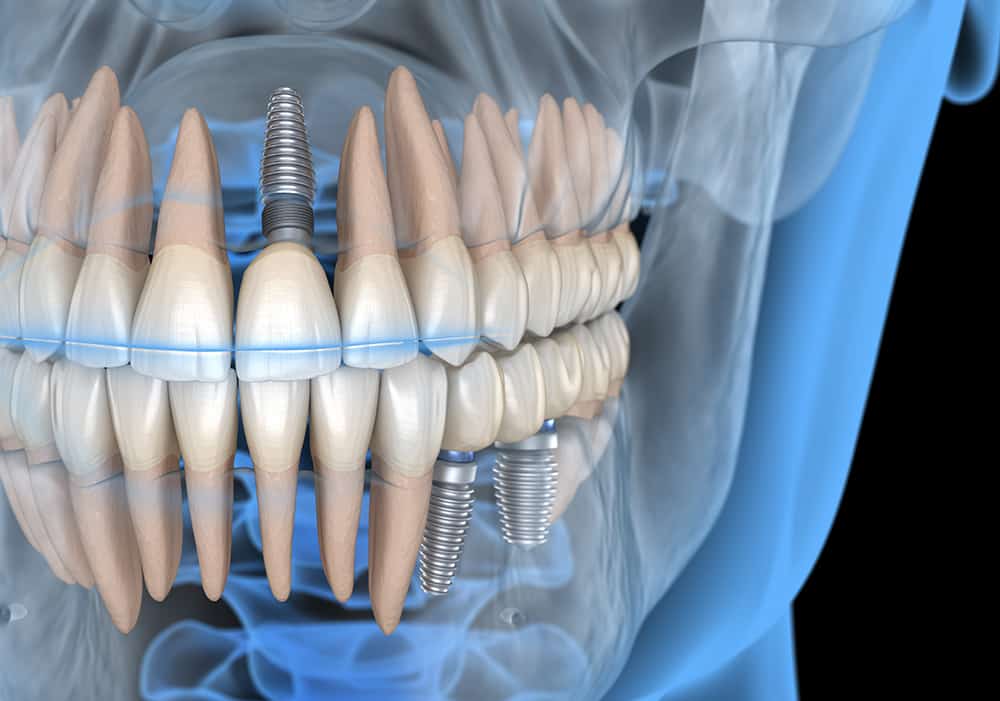
The most widely used type of implant placed is the endosteal implant. These implants are suitable in either the upper or lower jaw.
An endosteal implant is placed when adequate healthy bone is available. If sufficient bone is not available, a bone graft procedure must be performed before implant placement.
There are two types of endosteal implants:
– The screw or threaded cylinder implant
– The bladed implant
The surgeon placing the implant will determine which design is best for a specific case. Once the type is selected, the implant is then inserted into the jaw and given a couple of months to heal before the abutment and crown are placed.
Endosteal implants offer stability and result in a natural feeling tooth replacement.
Subperiosteal Implant
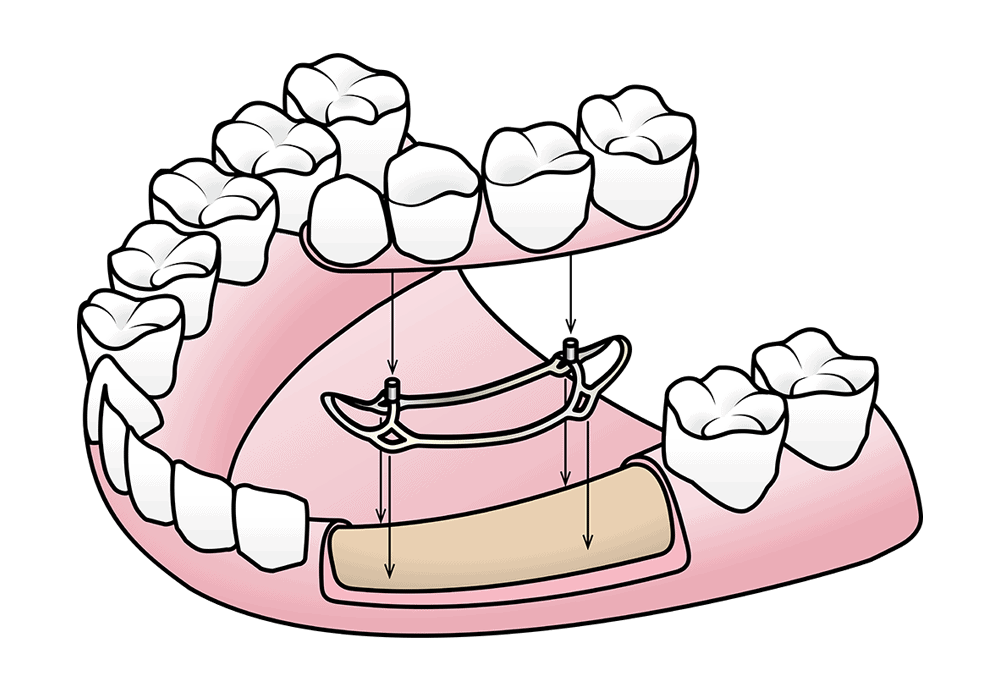
Subperiosteal implants are used when adequate bone depth isn’t available and bone grafting is not an option.
This method uses a frame with metal posts that are not embedded into the jawbone but rather sit on top of the bone just below the gums. Because it is not embedded into the bone but sits on top of it, the amount of bone available is not a factor.
Bone grafting has created a solution for those who do not have adequate bone to support an implant making the use of subperiosteal implants rare when compared to the endosteal implant.
Zygomatic Implant
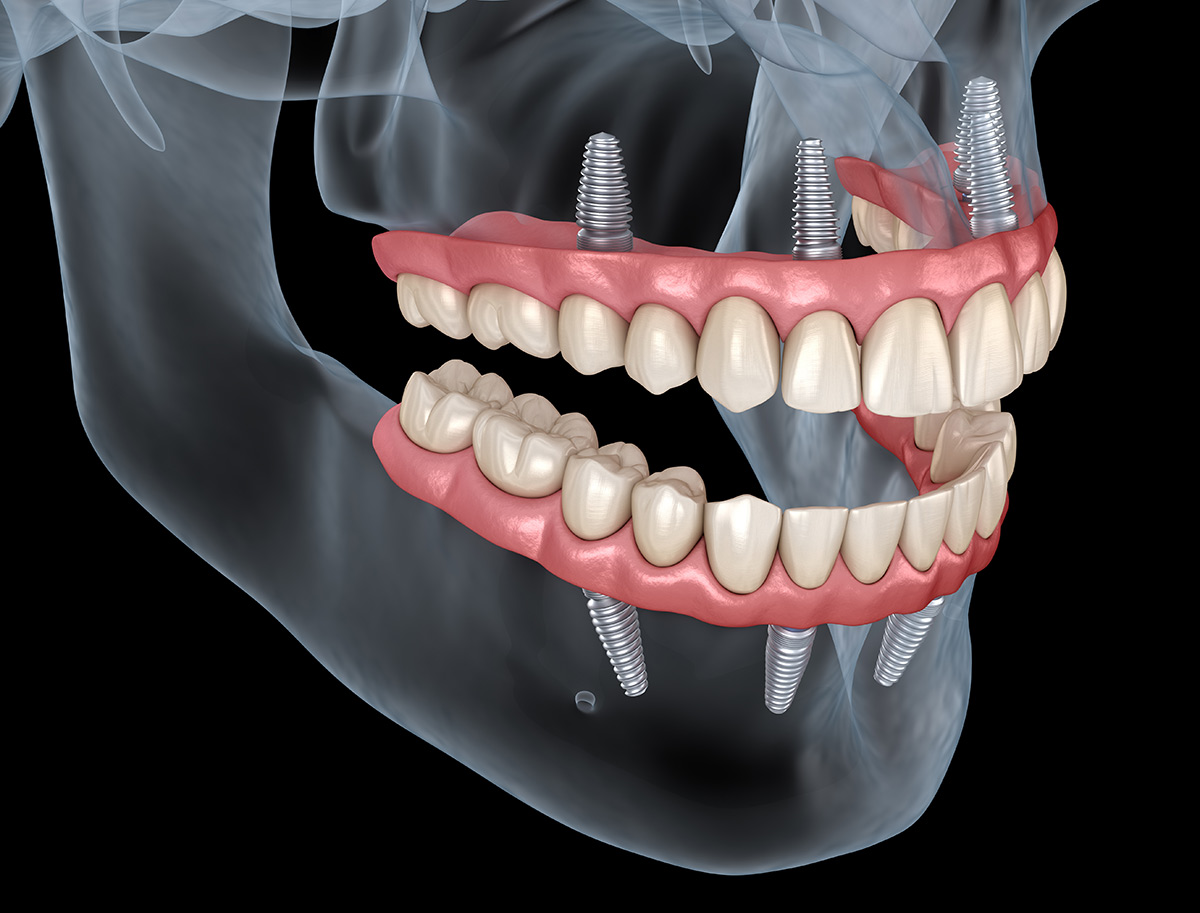
The zygomatic implant is categorized as an endosteal implant but where it differs is the placement of the implant. These implants are placed in the patient’s cheekbone or zygomatic bone rather than jawbone.
These are an option when adequate jawbone is not available.
This implant procedure is faster to perform and does not require much healing time.
Once the implant surgery is complete, the final crown can be immediately placed.
All On 4 Dental Implants

All On 4 is a more recent advancement in the area of implant dentistry. Using a bridge prosthesis, All On 4 dental implants can replace all 32 teeth using just four implants. If you need all of your teeth replaced, this technique is ideal compared to replacing each tooth with an individual implant.
How Much Do Dental Implants Cost?
Dental implants offer a superior solution when it comes to replacing missing teeth. Therefore, implants mimic natural teeth and can bring a person’s mouth back to normal function and support bone health.
When seeking treatment for missing teeth, it is essential to note that no two-implant cases are alike. Each person has a unique situation, and because of this, dental implants can have a wide range of pricing options.
Some of the factors that help determine the final price of a specific case include:
- A comprehensive exam that may include computed tomography (CT scan). This will provide a 3D image that can help determine bone viability.
- Determining whether any teeth will need to be extracted.
- Evaluate where any bone grafting is necessary or sinus lifting.
- Dental surgery to place the implant in the appropriate place within the jaw.
- The creation of an abutment that is custom to the implant system used.
- Fabrication of the final crown to fit the abutment
- Insertion of the crown over the abutment.
A quick google search revealed the range of pricing to be from $800 to $90,000. The range is wide because no two cases are the same. Therefore, the most important way to determine the cost of implant therapies is to invest in a comprehensive exam and find out the specifics of your unique situation.
Most dentists will ascertain the information for each unique situation and provide the costs upfront. While some dentists provide the entire procedure from surgery to final crown, some will refer out to specialists. It is essential to understand all of the costs. Also, most dentists offer some payment plans to make treatment more attainable.
How Successful Are Dental Implants?
Dental Implants are one of the best options for replacing missing teeth. An implant is the only tooth replacement option that replaces the missing tooth from the crown to the root. They look and function just like a natural tooth.
In addition, a dental implant is the only option that preserves and promotes bone health. Dental implants are also one of the most successful, long-lasting dental procedures available.
The part of the implant that is surgically placed into the jaw can last a lifetime. This is because dental implants are made from biocompatible materials to the jaw. This helps implants to integrate with the bone and create a permanent hold.
Studies have shown that dental implants have between a 95%-98% success rate. The success rate can vary based on where the implant is placed. The crown placed on top of an implant may need to be replaced more frequently. Dental crowns can often last anywhere from 10-20 years.
Are You A Good Candidate for Dental Implants?
One of the key factors ensuring the success of a dental implant is the thorough examination the dentist performs before implant placement surgery. In addition, the dentist will assess your oral health and overall health to ensure you are suitable for a dental implant.
The specific considerations are as follows:
For an implant surgery to be successful, the patient must have adequate bone in the jaw. Sufficient bone must be present to be an excellent dental implant candidate. Therefore, you must seek out implant treatment as soon as possible.
When a tooth is missing, the bone under the missing tooth will deteriorate, also known as resorption. The sooner an implant is placed, more bone will be available to properly integrate with the implant, a process known as osseointegration.
If it is determined that there is not enough bone at the implant site, a bone graft can be performed. A bone graft will add density and volume in the areas of your jaw where there is bone loss.
There are four types of bone graft materials:
- Autogenous – This is where the bone material is taken from the patient’s own body.
- Alloplast – This is where the bone graft material is synthetic.
- Allograft – When the bone graft material is retrieved from a tissue bank.
- Xenograft – When the bone graft material is taken from an animal tissue bank.
Once the bone graft procedure is complete, it will take time for your body to grow and regenerate bone tissue. Taking the time to ensure adequate bone is in place will ensure a successful long-term dental implant restoration.
Certain medical conditions can affect the possibility of a patient being a good candidate for dental implants. For example, patients with diabetes have an increased risk of gum disease. This can lead to implant failure due to peri-implantitis. For this reason, a thorough analysis of your overall medical history should be completed.
Cigarette smokers have an increased risk of implant failure over time. This is because smoking slows down the body’s ability to heal and negatively impacts the health of gum tissue and bone.
Bruxism or grinding the teeth can disrupt the implant’s ability to integrate with the jaw bone. In addition, the implant can come loose due to the pressure placed on the titanium post. Also, the dental crown placed over the implant can wear down or even fracture.
The dentist will conduct a thorough examination complete with x-rays to determine bone health and a medical health analysis to determine whether or not dental implants will be a safe and successful option for you. Therefore, it is crucial that you share your medical history in detail with your dentist.
Success Rate of Dental Implants
The option to get a dental implant is a relatively routine procedure. However, the thorough evaluation that the dentist does help to ensure the patient is a good candidate for the procedure. This is the reason dental implants have such a high success rate.
To improve the success of your dental implants following are my recommendations:

1. Eat soft foods after getting your dental implants.
It is vital to follow the instructions of the oral surgeon to lower the risk of post-surgery complications.
Until the implant has healed, refrain from eating hard foods and candy and instead eat soft foods. Here are some soft foods that would be excellent choices: applesauce, baked beans, broth and soups, bananas, yogurt, mashed potatoes, scrambled eggs, ice cream, smoothies, avocados, oatmeal, jello, pudding, noodles, macaroni and cheese, and hummus are a few examples.
Failure to do these simple instructions can lead to implant failure.

2. Practice good oral hygiene.
Practicing good oral hygiene is more important than ever after an implant has been placed.
You should treat your implants just like natural teeth. Brush at least twice a day and floss at least once. In addition, rinse your mouth with mouthwash. Finally, it is necessary to ensure no food settles around the implant. Failure to practice good oral hygiene can lead to periodontal infection and ultimately the loss of the implant.

3. Maintain regular dental checkups.
Your dentist will recommend a cleaning and checkup schedule. This will be the optimum schedule to help keep your mouth in the best shape possible and allow the dentist to monitor the progress of the implant.
The effort placed in practicing good oral hygiene and following the dentist’s directions is the most crucial factor in the longevity of dental implants.
How Long Do Dental Implants Last?
A dental implant is a permanent solution for missing teeth. A process called osseointegration bonds them with surrounding bone tissue, making them directly attached to the jawbone.
In the process of osseointegration, the implant material and the bone surrounding the implant fuse together. As a result, an implant makes an ideal foundation for a prosthetic tooth because of its ability to act as an artificial tooth root. Ideally, when an implant is placed, it has the potential to be a permanent part of the jaw like any other tooth root.
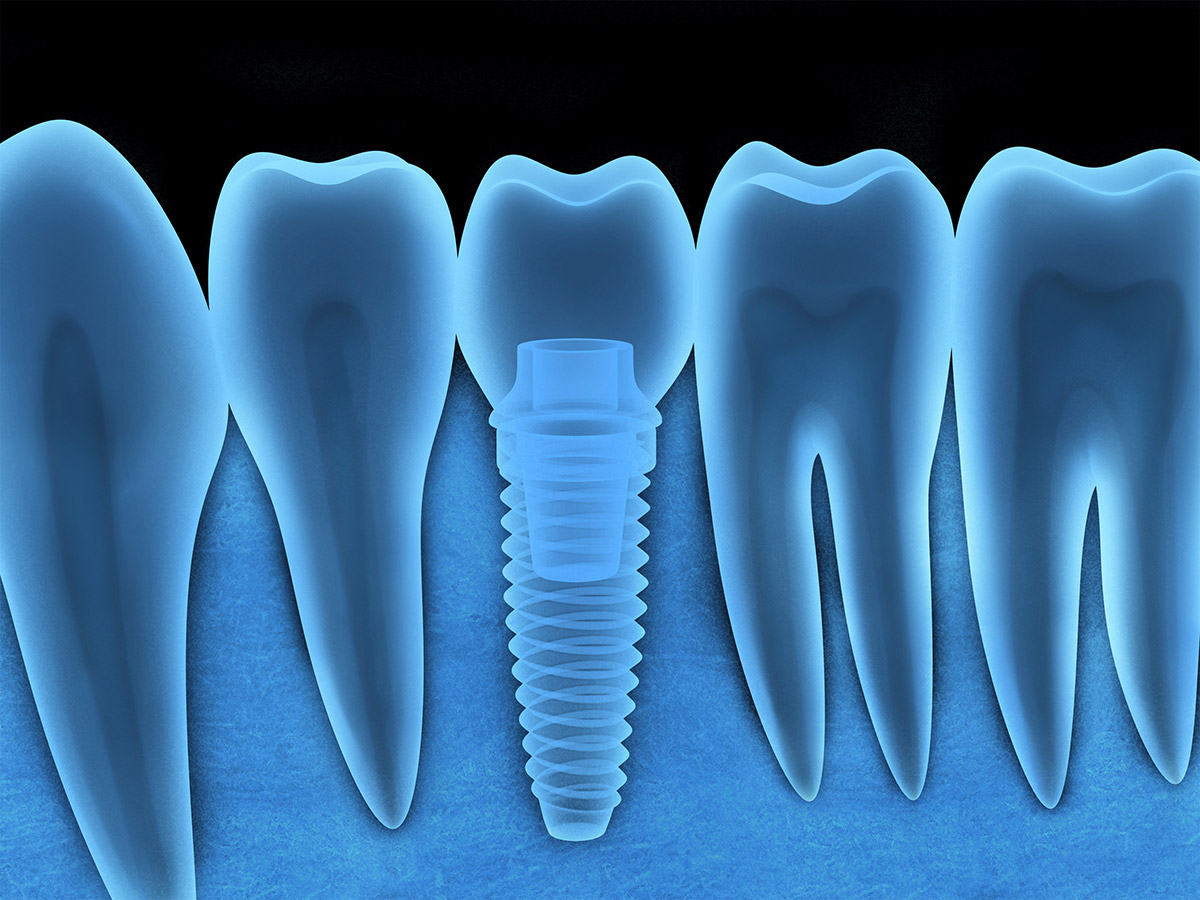
Implants have three parts and can last so long because of what they are made of and how they are designed.
An implant has three parts:
- Implant – Surgically inserted titanium or zirconia post that serves as the root of a crown in the jawbone.
- Abutment – Attached to the implant, the abutment extends above the gum line. Its purpose is to hold the crown.
- Crown – The crown is a false tooth that is cemented on top of the abutment. Dental crowns look and function like natural teeth.
It is important to point out that the implant (the part in the jawbone) does have the potential to be permanent. The crown placed on top is subject to the forces in the mouth and may require replacement after several years due to normal wear and tear.
The crown is exposed and actively involved in chewing and biting; this makes this portion more susceptible to failure. In fact, all crowns have a life expectancy of 10 to 25 years.
What Contributes to Dental Implant Failure?
The patient’s commitment to dental hygiene is crucial to the longevity of a dental implant. Pre-existing medical conditions, incorrect implant placement, and poor dental hygiene are the leading causes of implant failure. Additionally, implant failure can be caused by the following factors:
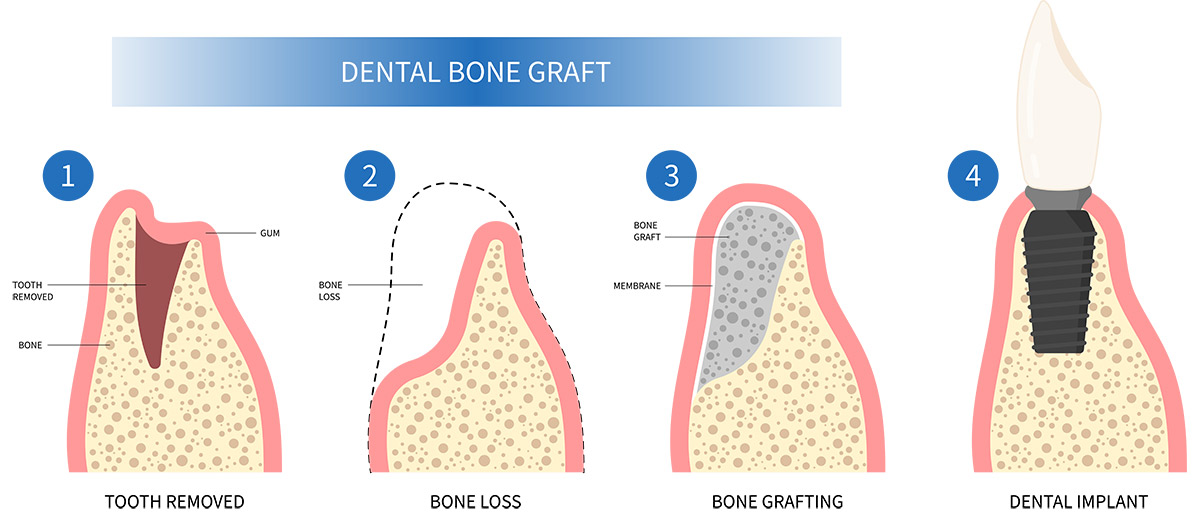
- Insufficient bone in the area where the implant is placed may result in the implant not being anchored properly in the jaw.There are many reasons why bone loss can cause an implant to fail, including:
- Osteoporosis
- Peri-implantitis
- A medical condition that affects bone health
- Implant failure is more common among smokers than among nonsmokers. Smoking may interfere with blood flow, explaining this. As a result, blood flow directly affects bone integration. Smoking can also lead to gum disease, resulting in bone loss and implant failure.
- Failures of implants have been related to medical conditions. Diabetes, bleeding disorders, cardiovascular disorders, and osteoporosis are all known to increase implant failure rates.
- Teeth grinding can cause trauma to the implant crown and prevent the implant from integrating with the bone correctly.
How Will I Know I Am Having Dental Implant Failure?
If you notice an issue with your implant, such as the following:
- When you bite down or chew, you feel discomfort.
- The implant can be moved.
- There is redness, swelling, bleeding, or pus around the area where the implant was placed.
You must see your dentist immediately if you experience any of these. Many issues that lead to implant failure can be treated if caught early.
What are the Signs of Dental Implant Failure?
Dental implants are a significant cosmetic dental procedure that can be life-changing for many. While technology is making replacing a missing tooth or teeth easier, it is a procedure that should be considered carefully. This is because these procedures involve your teeth and mouth, which are delicate parts of your body.
When dental implants are not handled correctly by experienced, trained dental professionals, they can go wrong in many ways.
There are two types of dental implant failures: right after the implant procedure or implant failure that occurs over an extended time.
What are the signs of dental implant failure? After getting dental implants, there are specific signs you should be aware of. Let’s look at those signs.
1. Symptoms of severe pain and discomfort
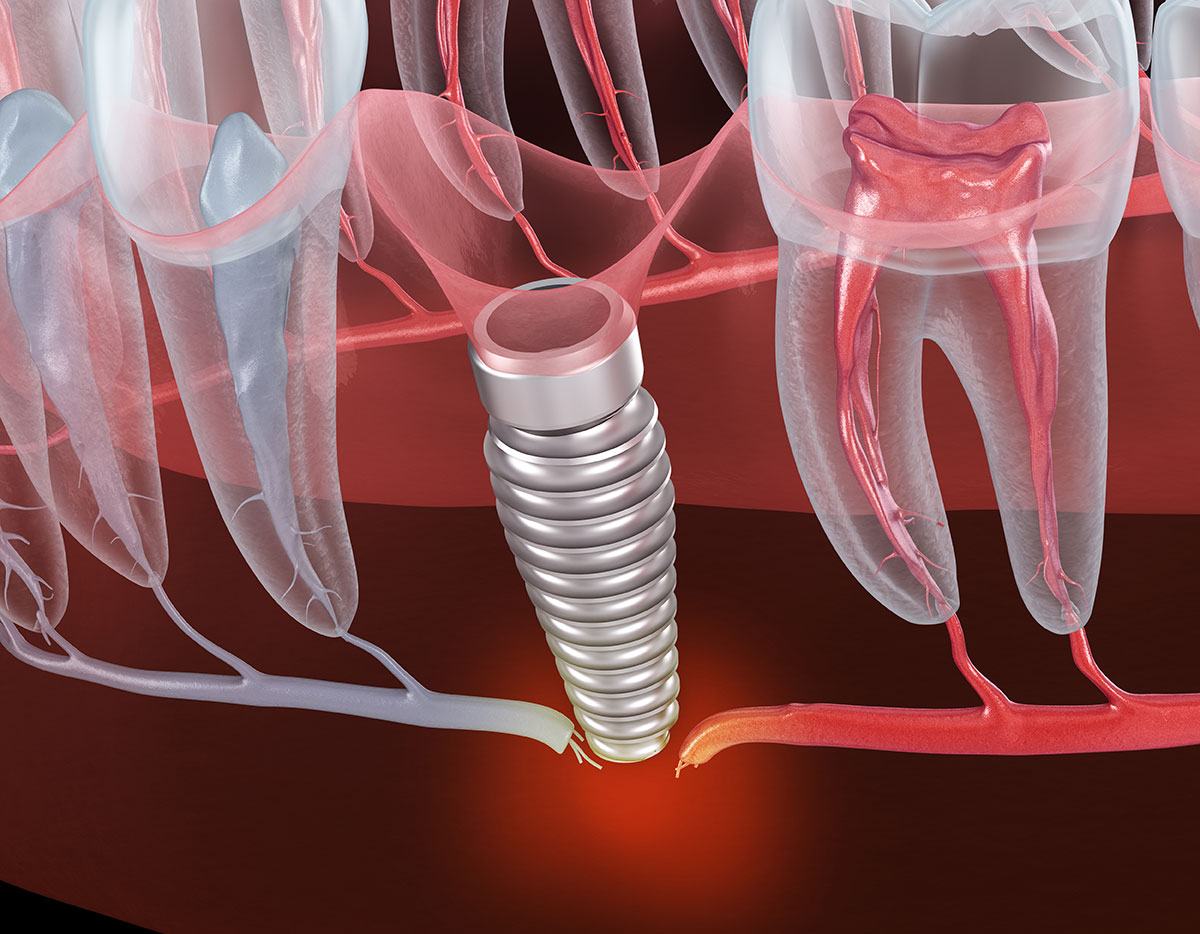
The healing process may cause some pain. Pain, however, can be a sign of a failed dental implant.
Is there a way to distinguish between the two types of pain?
During the healing process, you will experience pain for the first few days. After that, the pain is not as intense and can be controlled with painkillers prescribed by the doctor.
When a dental implant fails, you will experience excruciating pain and discomfort in the form of throbbing waves. Often, this pain persists for many months after the operation.
I recommend visiting your dentist for a checkup if you are experiencing such symptoms.
2. The gums around the dental implant recede
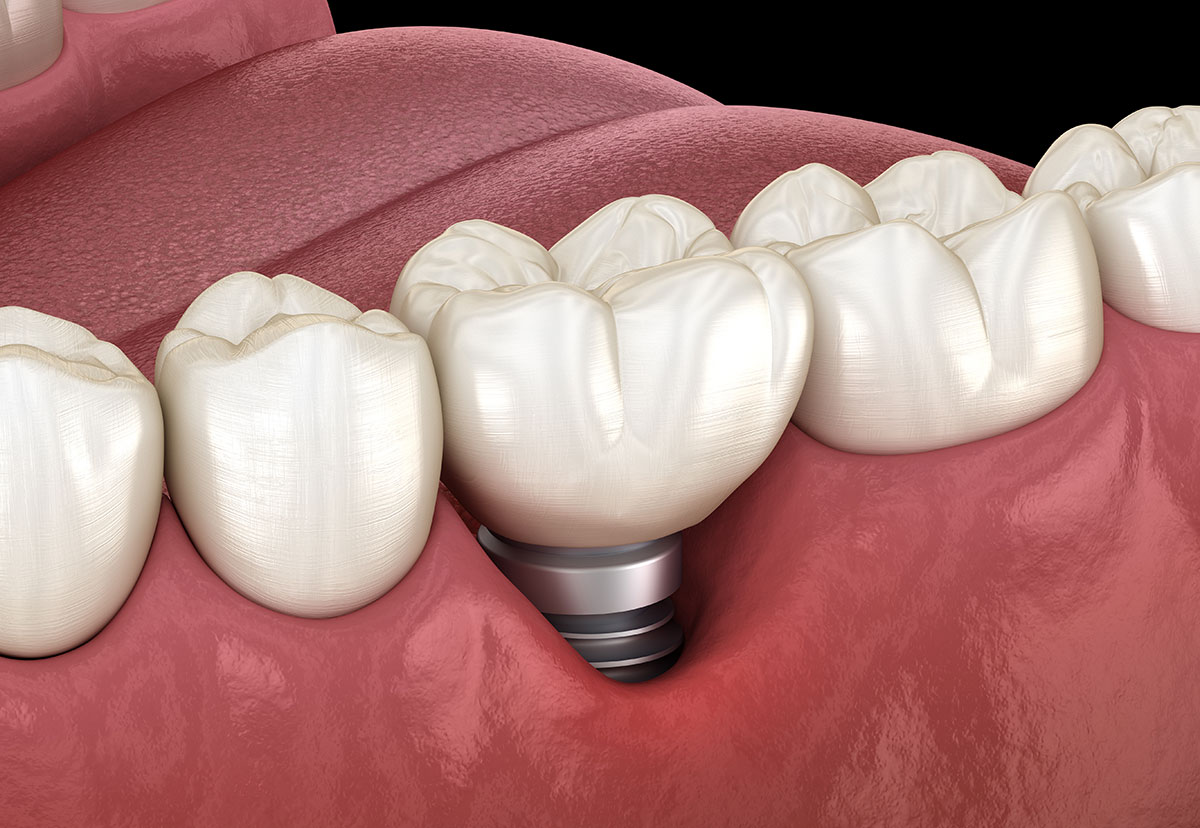
Several factors lead to gum recession around implants, including poorly positioned implants and insufficient gum and bone tissue.
What is the best way to tell if the gums around your dental implant are receding?
The first sign will be an abnormally long implant crown. As a result, the area around the implant becomes inflamed and painful.
Correct implant placement can prevent this. An essential part of this procedure is angulation, which should be performed using a 3D digital scanner and dental implant diagnostics and planning.
Additionally, maintain good oral hygiene and a healthy diet to maintain healthy gums and bone tissue.
3. The ability to chew and bite is difficult
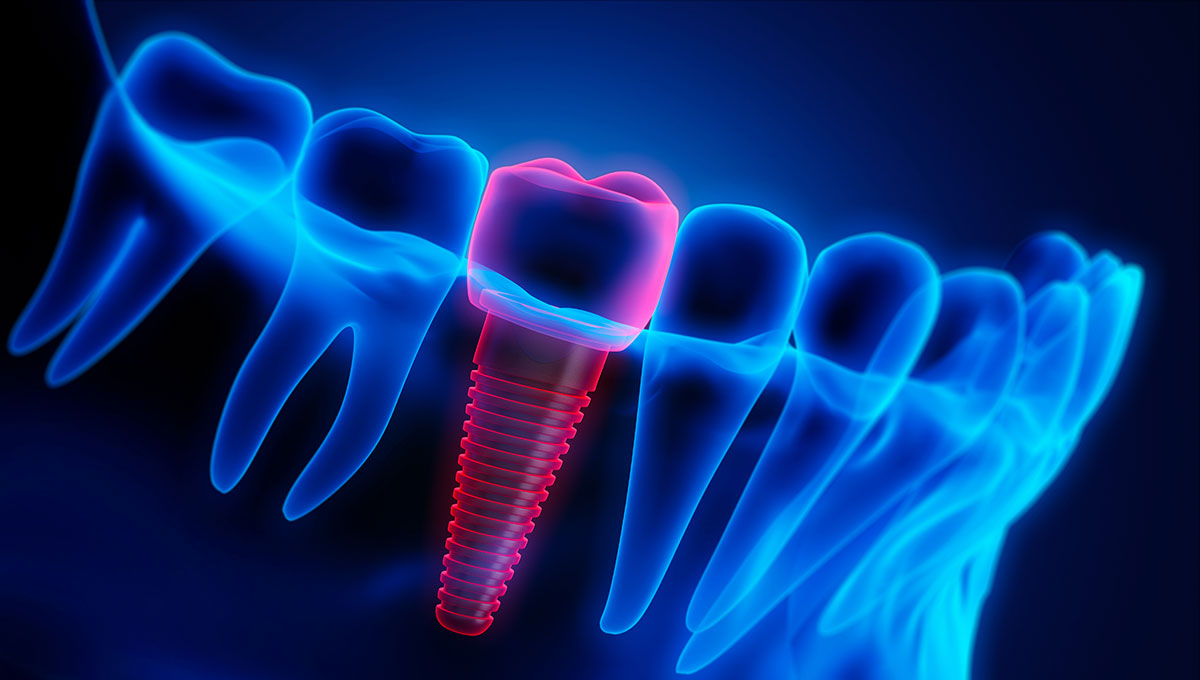
Biting or chewing food is difficult for you. If this occurs, it may be a sign that the dental implant has failed. When eating, talking, or biting down substances, you should never experience any abnormalities. Dental implants are designed to function and feel like natural teeth.
It is not a good sign if there is any pain associated with a dental implant. In some ways, it feels similar to experiencing pain while chewing when you have a cavity in your tooth.
4. Loose and shifting implants

You would not even be aware that you had an implant if it were done correctly. Consequently, it should never feel foreign to your mouth at any time.
When an implant is not seated correctly on the gums, you may notice it wobble when you speak, eat, or touch it. A failed implant can be easily identified by this sign.
Immediately contact your dentist if you discover a shifting and loose dental implant.
Leaving a loose implant unattended could damage your gums and jawbone or interfere with your smile.
5. Your Gums are swollen

After your implant procedure, minor swelling is expected. Within a few days, however, the swelling should disappear. However, if it persists or becomes inflamed, it’s a cause for concern.
You may have an infection if your gums appear extremely swollen and red. In severe cases, this infection can spread to your blood if left untreated. As a result, you may develop a dangerous health condition.
When an infection has escalated, it can be challenging to treat, not to mention the intense pain.
If swelling persists beyond the healing stage, you should consult your dentist and get it treated as soon as possible.
6. Small movements in dental implants

Your dentist can replace a tooth immediately after it has been implanted. As a result, this procedure takes less time than implantation, which requires waiting until the dental implant integrates with your jaw bone before placing the tooth.
As a result, you will be able to schedule fewer checkups in the beginning. A weak jaw bone, however, can put excess stress on an implant, causing the implant to fail.
An x-ray showing small even micro-movements in the implant can reveal if there is a problem that needs to be addressed. While the example image above shows a visible alignment issue, there are primarily micro-movements that the eye cannot detect that can cause the most problems and only be detected with the latest dental technology and oral scanners.
7. Reaction to allergens

The titanium alloy used in dental implants can cause allergic reactions in some people. In addition to tingling and swelling around the gums, allergic reactions often cause a loss of taste. When you experience sudden allergic reactions, your body is possibly rejecting your dental implant. If this occurs, I recommend you make it a priority to see your dentist as soon as possible.
8. Teeth grinding, Clenching, and Tapping

Several factors can lead to implant failure, including stress, missing teeth, or misaligned teeth.
Sleeping can also result in teeth grinding, clenching, or tapping. These factors can result in a long-term failure of a dental implant.
Initially, you will feel pressure around your implant, followed by a nagging, persistent pain in your gum and jawbone.
The excessive pressure on your teeth resulting from dental implants makes it difficult for the implant to integrate with your jaw bone.
The teeth grinding could be a sign that your dental implants are failing. In this case, you need to have your dentist check whether the dental implant is positioned correctly in your jawbone.





Give Us A Call At 310.836.6161 Or Request An Appointment Online



